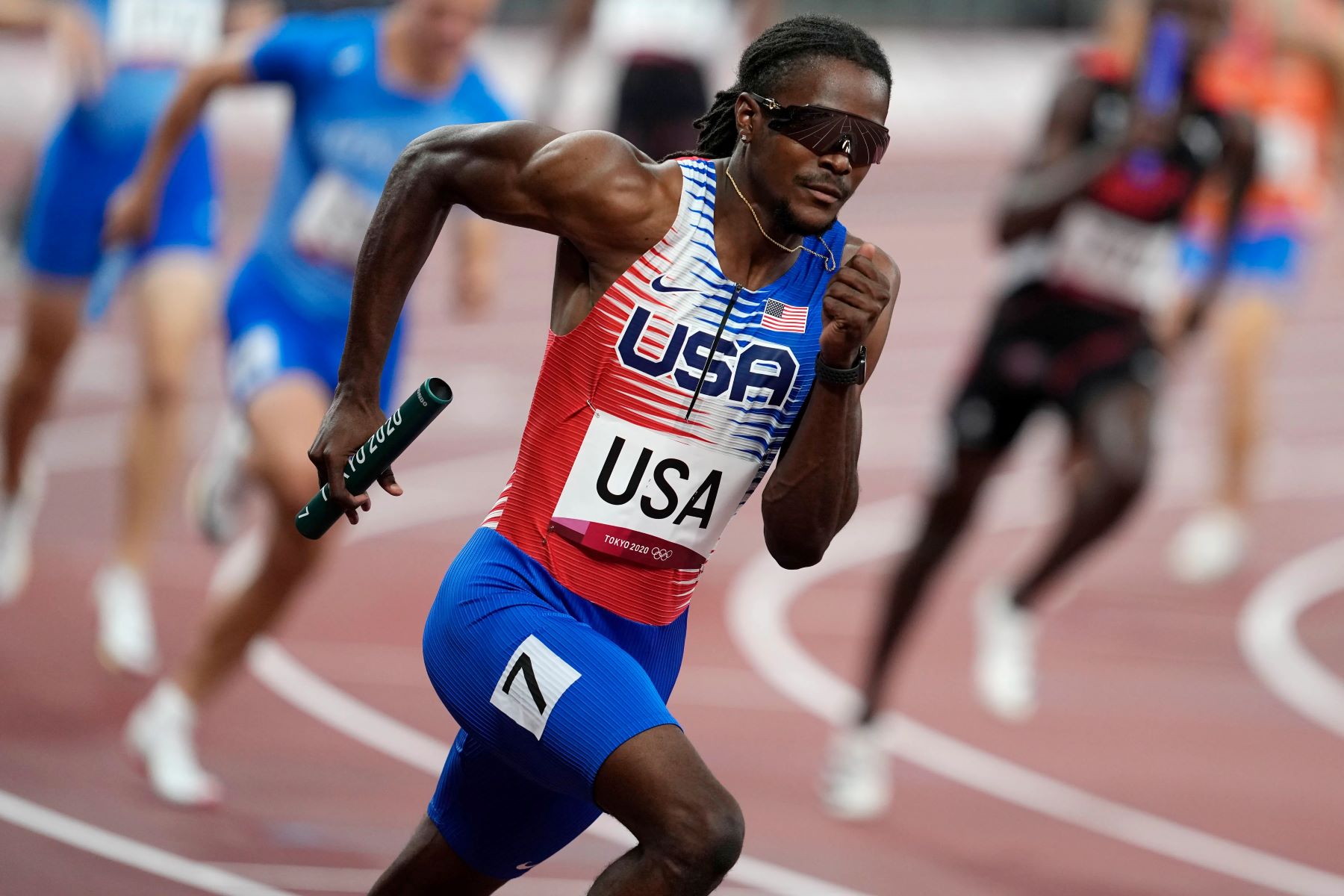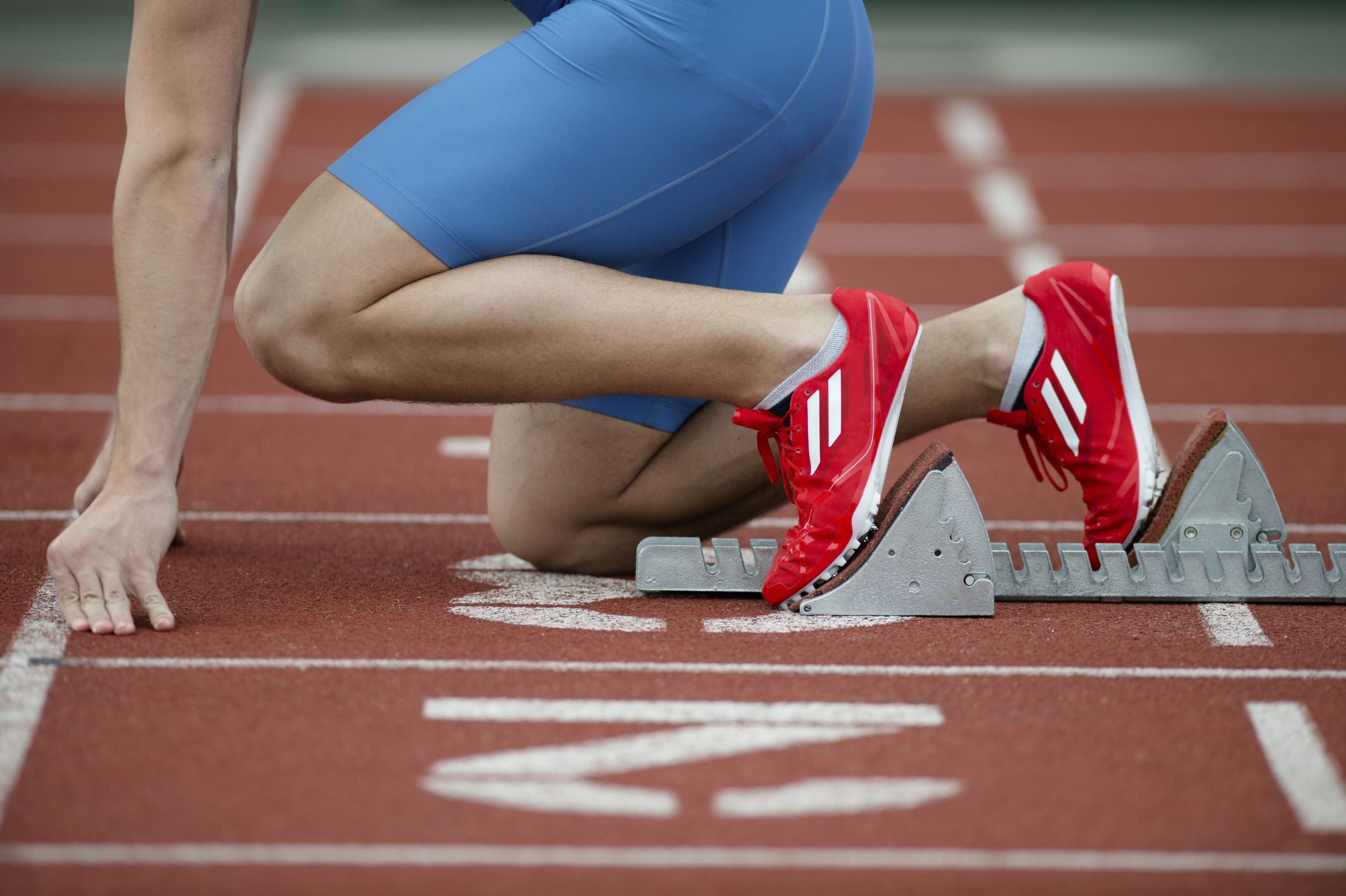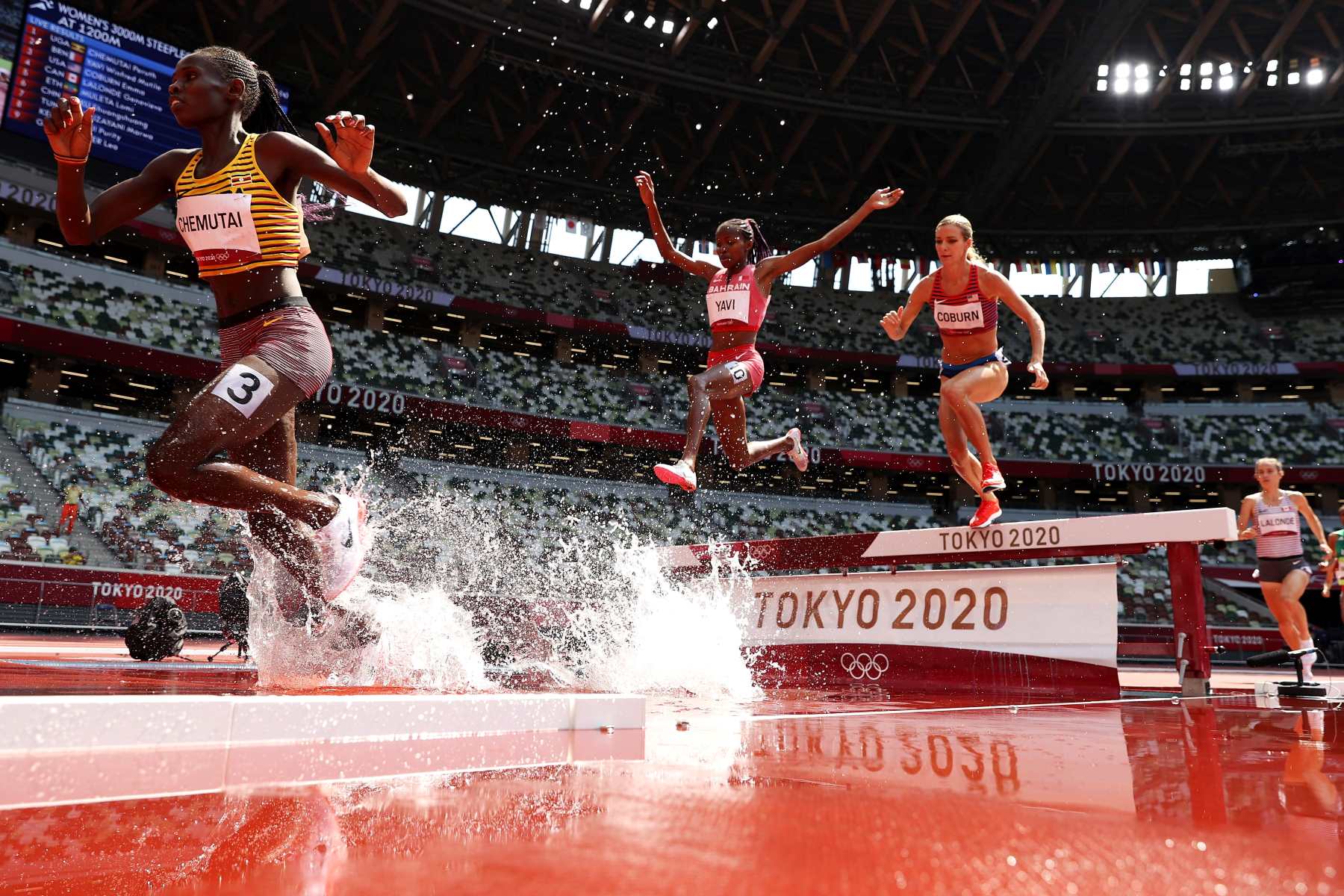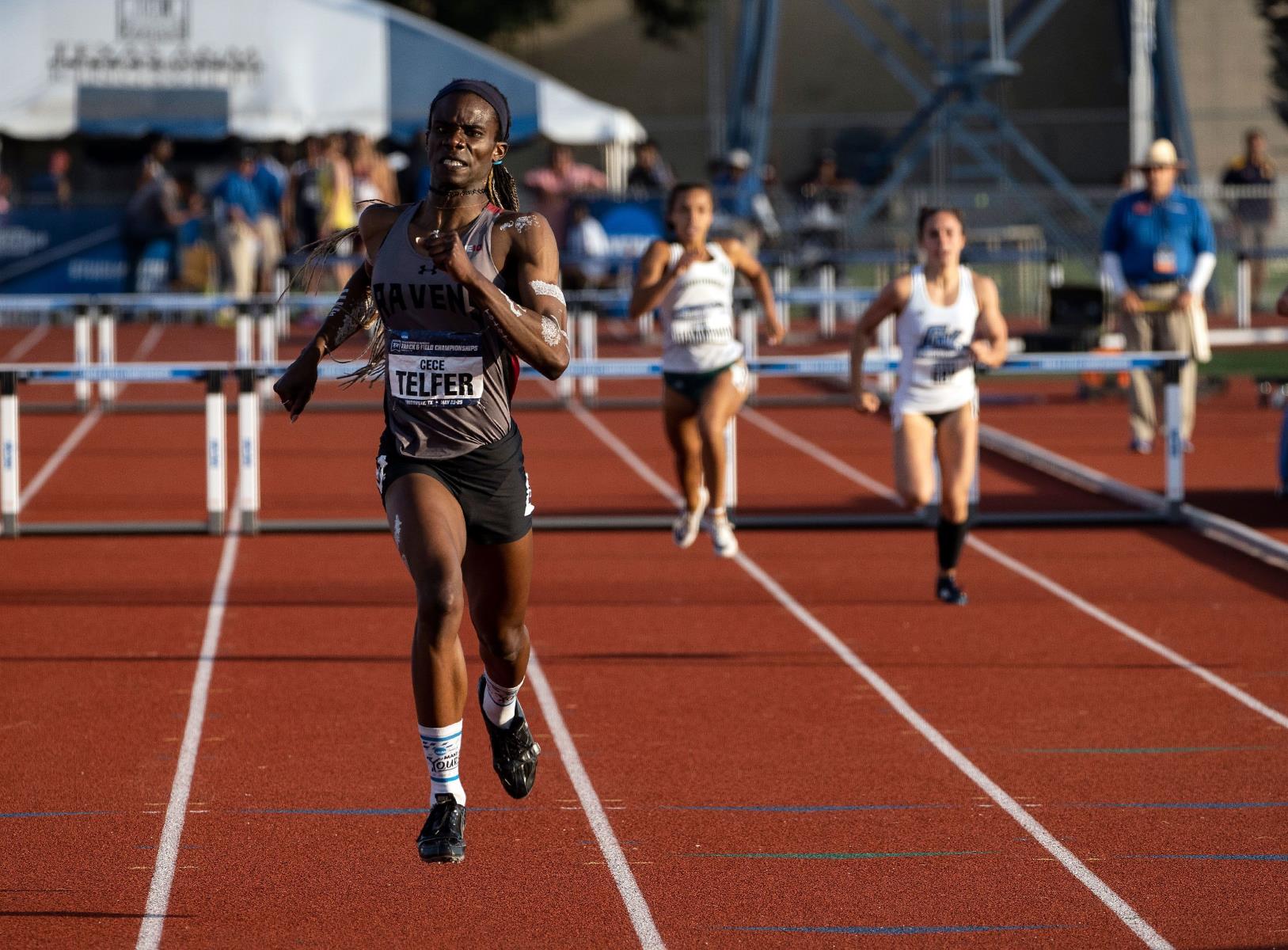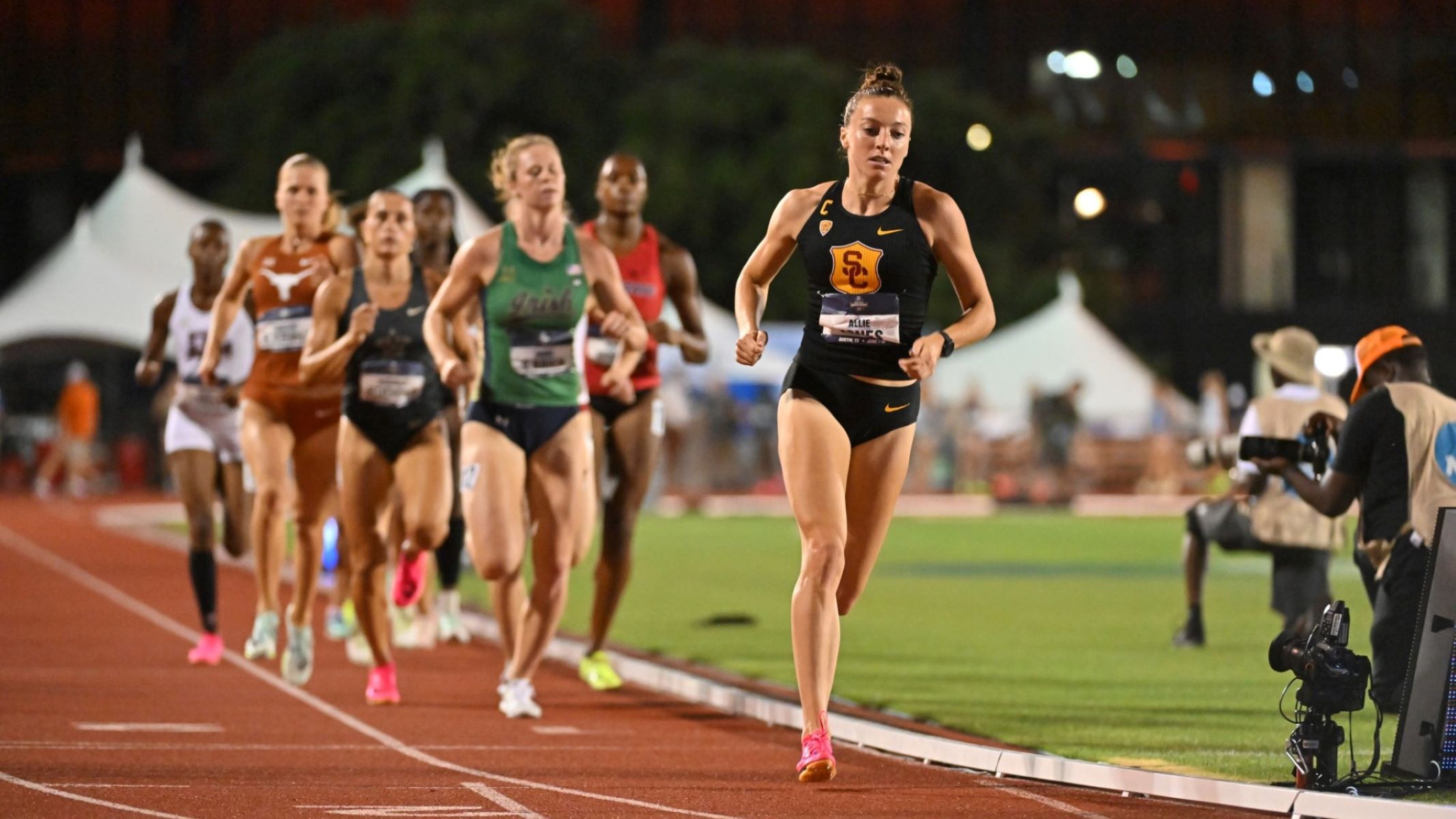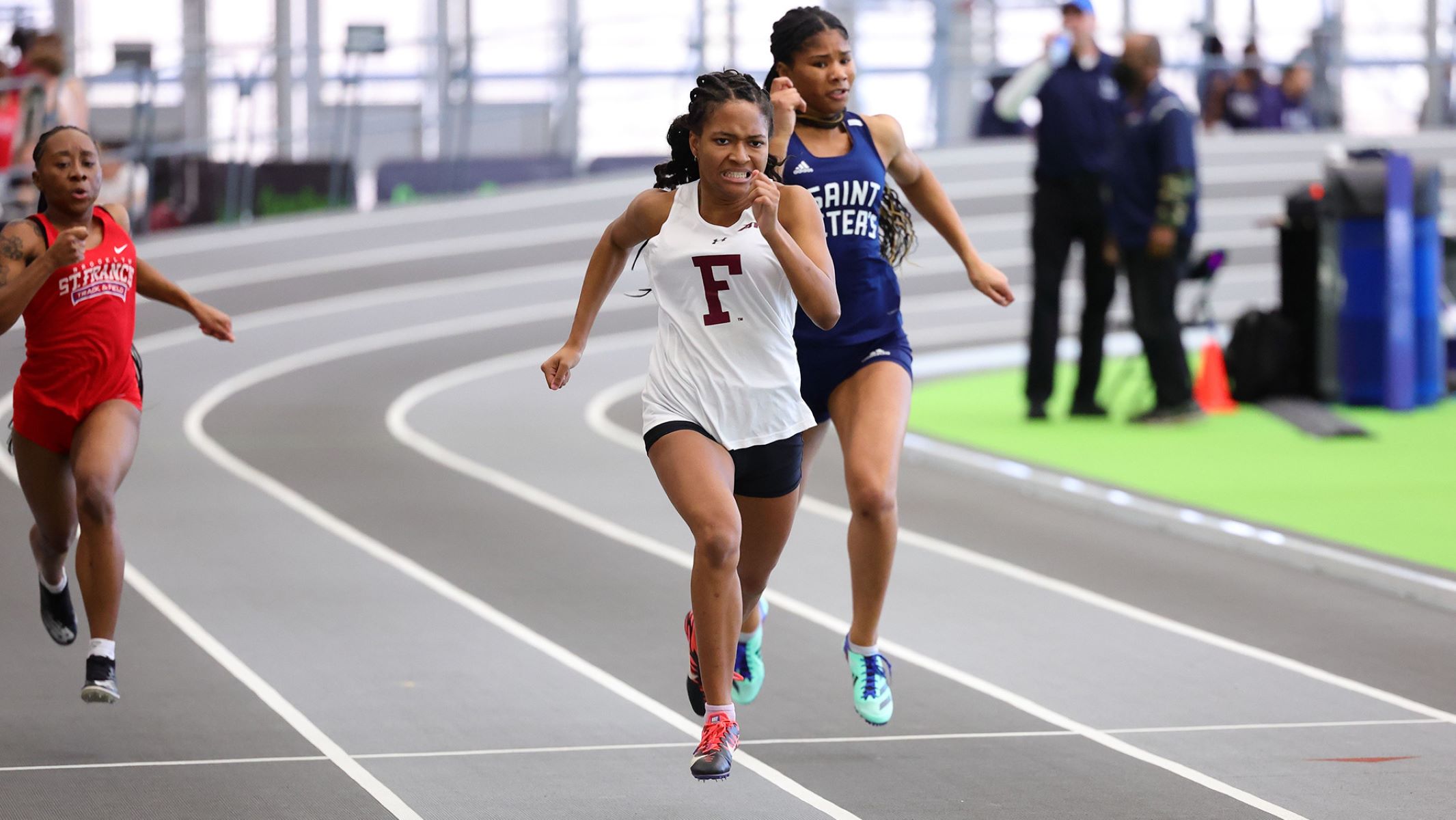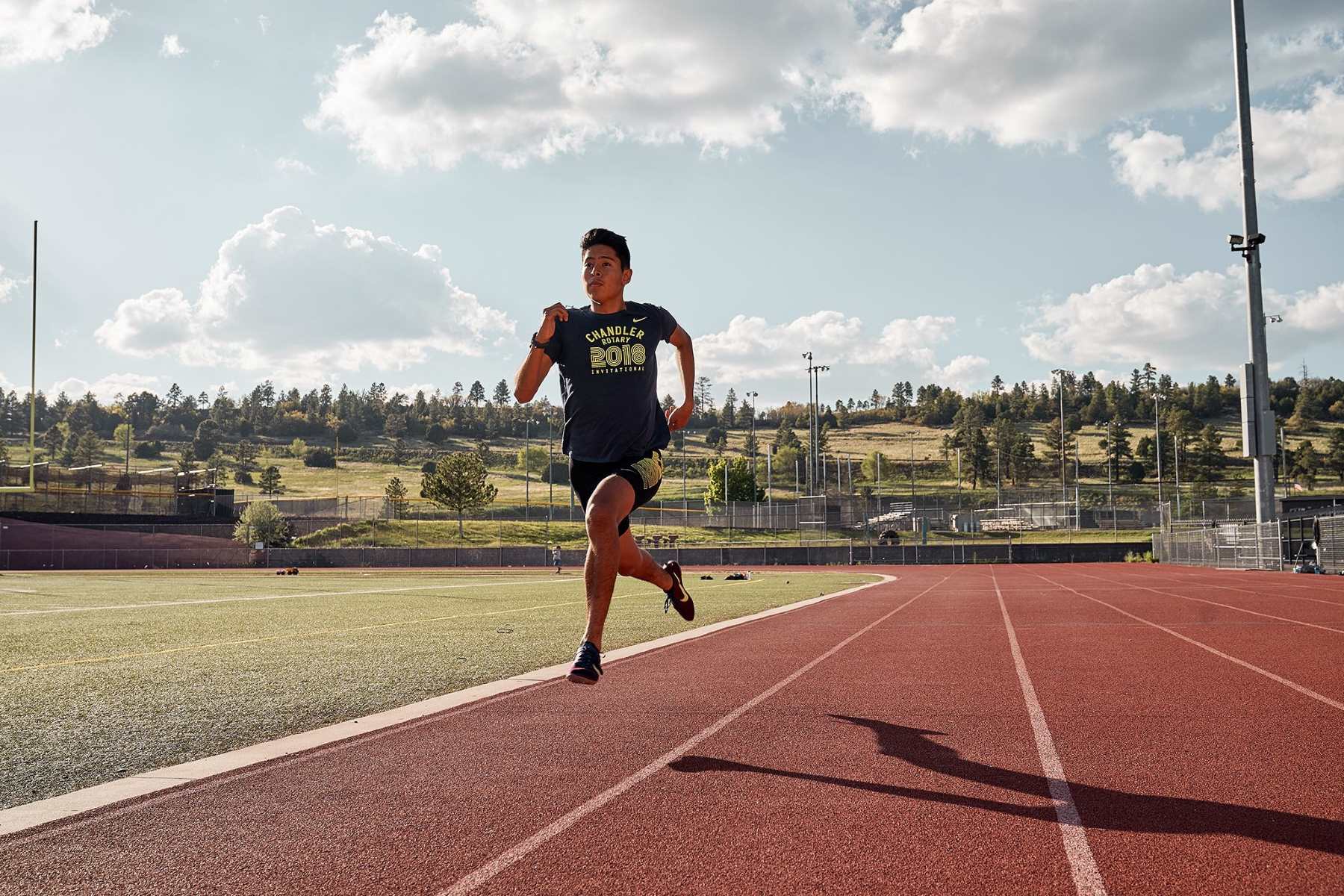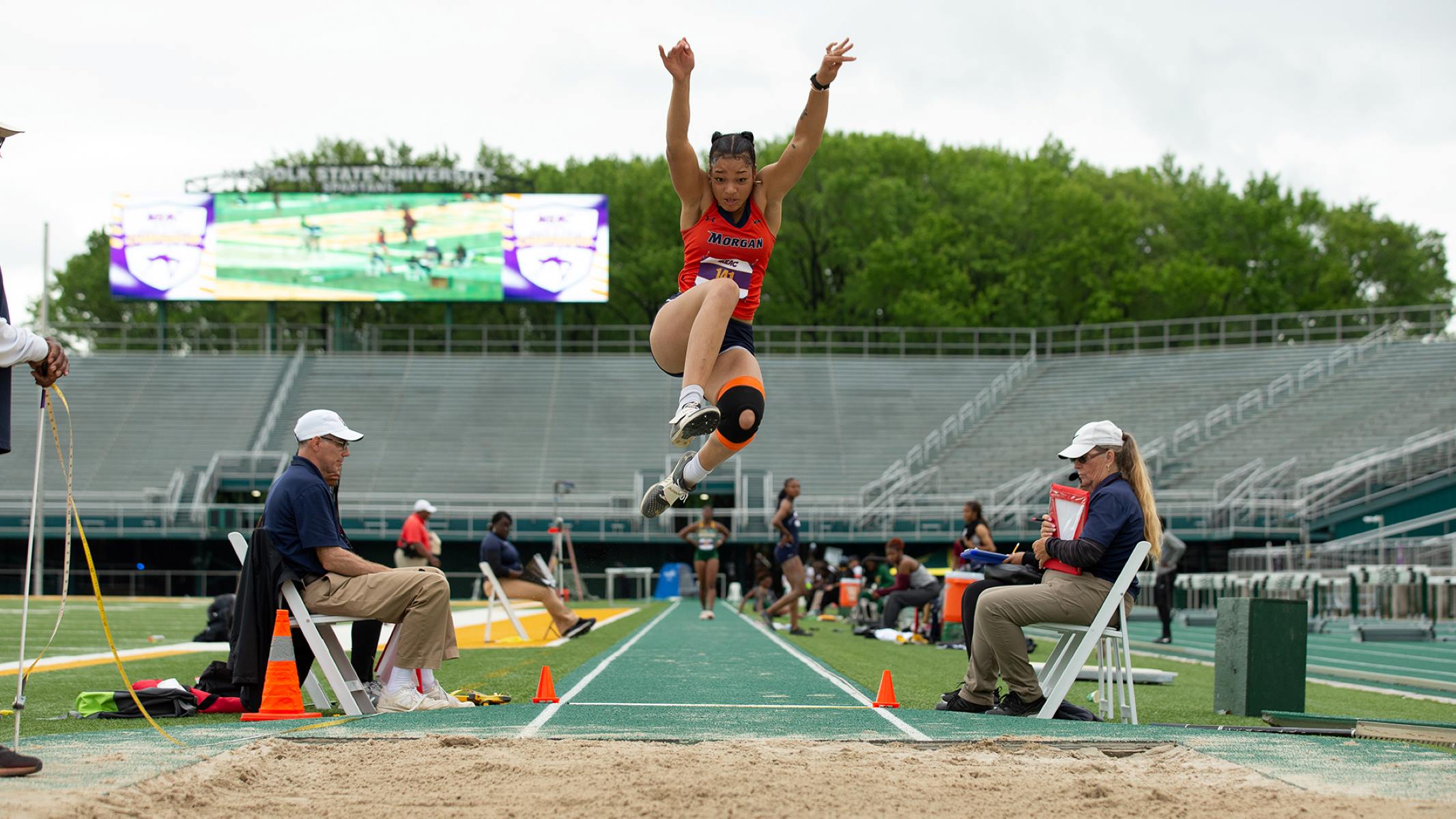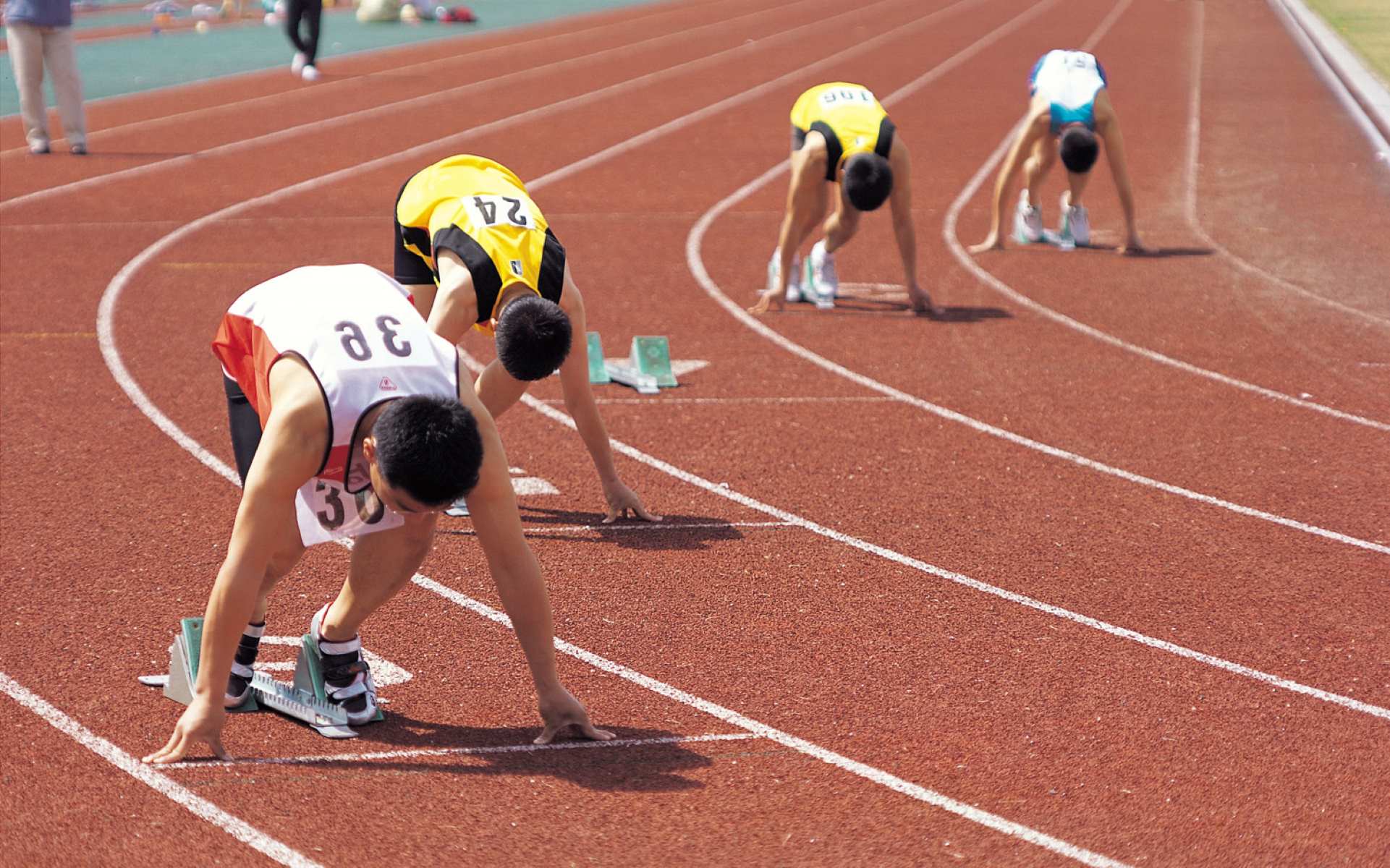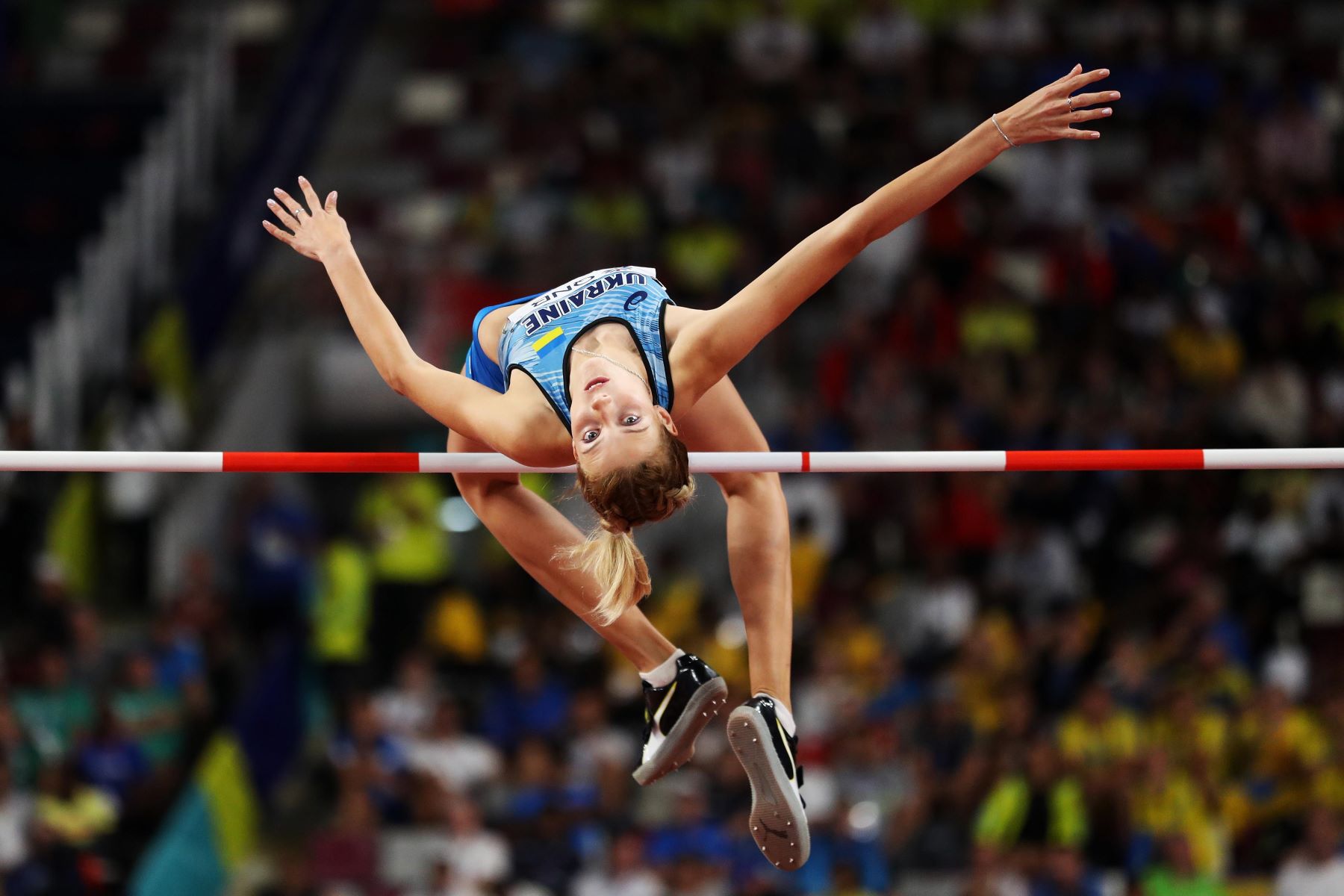

Featured
What Is High Jump In Track And Field
Published: September 4, 2023
Discover the expertise and techniques required for high jump in track and field. Explore featured athletes and their incredible performances in this thrilling event.
Introduction
The high jump is a captivating and highly anticipated event in the world of track and field. It showcases the incredible athletic prowess and agility required to defy gravity and soar over a bar set at increasing heights. Athletes have been engaging in these exhilarating displays of vertical jumping for centuries, with the event evolving and reaching new heights over time.
The high jump has its roots in ancient Greece, where it was part of the pentathlon, a five-event competition held during the ancient Olympic Games. However, the modern version of the high jump, as we know it today, first gained popularity in the mid-19th century. It quickly became a standout event in track and field competitions worldwide.
The objective of the high jump is straightforward – athletes aim to clear the bar without knocking it down. Participants utilize various techniques and strategies to achieve this, employing explosive power, flexibility, and impeccable timing. It is not just a test of physical strength but also a mental challenge, as competitors must have the confidence and focus to push their limits.
One of the most intriguing aspects of the high jump is the progression of the bar height throughout the competition. Each successful clearance leads to a higher bar being set, pushing athletes to continuously improve and achieve new heights. The suspense builds as competitors approach their personal bests and strive to surpass the current world record.
In recent years, the high jump has produced some incredible champions and record-breaking performances. From Dick Fosbury’s revolutionary “Fosbury Flop” technique to Javier Sotomayor’s astonishing 2.45 meter world record jump, the event has seen remarkable accomplishments that have captivated audiences around the globe.
In this article, we will delve into the history, rules, techniques, training, and notable figures of the high jump. Whether you are an aspiring high jumper, a track and field enthusiast, or simply curious about this captivating sport, join us as we explore the fascinating world of high jump.
History of High Jump
The high jump has a rich and fascinating history that dates back to ancient times. While the concept of jumping over an obstacle can be traced back even further, the modern high jump as we know it today has evolved over centuries of athletic development.
Ancient depictions of the high jump can be found in Greek pottery and sculptures from as early as the 8th century BC. The event was initially a part of the pentathlon, a five-event competition that also included discus throwing, javelin throwing, wrestling, and foot racing. In these early versions of the high jump, athletes used a technique known as the “scissors jump,” where they straddled the bar and lifted their legs over it.
Throughout history, various techniques and styles emerged as athletes sought to find more efficient and effective ways to clear the bar. In the 19th century, the “straddle” technique gained popularity, where athletes would face down and jump over the bar legs-first. This technique dominated the high jump scene until the mid-20th century.
However, the arrival of Dick Fosbury revolutionized the event in the 1960s. Fosbury introduced a new technique known as the “Fosbury Flop,” which involved jumping headfirst and landing on one’s back. This innovative approach defied convention and initially drew skepticism. Yet, Fosbury’s success and subsequent Olympic gold medal in 1968 popularized the technique, and it soon became the standard method for high jumpers worldwide.
Since then, high jump records have continuously been shattered as athletes refine their techniques and push the boundaries of what was once thought possible. In 1993, Javier Sotomayor of Cuba set the current men’s world record with a jump of 2.45 meters (8 feet 0.46 inches). On the women’s side, Stefka Kostadinova of Bulgaria set the record in 1987 with a jump of 2.09 meters (6 feet 10.3 inches).
The high jump has also become a staple event in major athletics competitions, including the Olympic Games and World Championships. Athletes from all over the world train tirelessly to perfect their craft, seeking to outdo their competitors and etch their names in high jump history.
As the high jump continues to evolve, it is clear that the pursuit of excellence and the desire to reach greater heights will always be driving forces in this captivating sport.
Rules and Regulations
The high jump is governed by specific rules and regulations to ensure fair competition and safety for athletes. Understanding these rules is essential for both participants and spectators who wish to fully appreciate the nuances of the event.
The basic premise of the high jump is to clear a horizontal bar without knocking it down. After clearing the bar successfully, the height is raised, and the process repeats until only one athlete remains. Here are some key rules and regulations that govern the high jump:
- Approach: Athletes have a runway to build momentum and approach the bar. The length of the approach varies based on the competition level.
- Takeoff: Athletes must take off from one foot. The takeoff foot should land first and be the only part of the body to make initial contact with the ground.
- Scissors Jump and Fosbury Flop: The rules allow high jumpers to use either the traditional scissors jump, where they straddle the bar with one leg at a time, or the Fosbury Flop technique, where they jump headfirst and curve their bodies to clear the bar.
- Knocking the Bar: Athletes must clear the bar without knocking it down. If the bar is dislodged, it is considered a failed attempt.
- Vertical Clearance: The height cleared is measured vertically from the takeoff point to the top of the bar. This measurement is used to determine successful jumps and set new records.
- Attempts and Eliminations: Athletes are typically given three attempts at each height. If they fail to clear the bar in three attempts, they are eliminated from the competition.
- Tiebreakers: In the event of a tie, countback rules are used to determine the winner. Countback refers to the number of jumps and misses at each height leading up to the tied height.
- Doping and Anti-Doping Regulations: Like all track and field events, high jumpers are subject to strict anti-doping regulations to ensure fair competition. Regular testing is conducted to detect the use of performance-enhancing substances.
It’s important for athletes to familiarize themselves with these rules to avoid disqualification and to strategize their approach during high jump competitions. Officials closely monitor each attempt and ensure that competitors adhere to the established guidelines.
By following these rules, high jumpers can compete on an equal playing field and showcase their athletic abilities in a safe and regulated environment.
Technique and Form
The high jump requires not only raw athleticism but also a proper technique and form to maximize one’s jumping potential. Every detail, from the approach run to the takeoff and clearance over the bar, plays a crucial role in achieving success. Let’s explore some key elements of effective high jump technique:
- Approach: A well-executed approach is essential for generating speed and momentum. Athletes typically use a curved run-up to optimize their takeoff angle. The number of strides and the distance covered may vary depending on the athlete’s individual style and preferences.
- Takeoff: The takeoff is a critical moment in the high jump. Athletes must have a powerful and explosive takeoff, usually performed from a strong and dominant leg. The takeoff foot should be positioned slightly in front of the body to ensure maximum upward thrust.
- Body Position: As the athlete leaves the ground, the body should remain straight and aligned. Proper body positioning includes an arched back, raised chest, and extended arms. This positioning allows for efficient transfer of energy and better control throughout the jump.
- Fosbury Flop: The Fosbury Flop technique, popularized by Dick Fosbury, is now the most commonly used technique in high jump. It involves a curved approach and a rotational movement over the bar, allowing the athlete to clear greater heights while minimizing contact with the bar.
- Leg and Knee Drive: As the athlete ascends over the bar, a powerful leg drive is crucial. The lead leg should drive upward, while the trail leg follows in a fluid motion. Proper knee drive helps maintain a high center of gravity, allowing for higher clearances.
- Bar Clearance: Clearing the bar is all about timing and coordination. Athletes must extend their bodies and kick their trailing leg upward to ensure proper clearance. The head and shoulders should pass first, followed by the lower body.
- Landing: Once the bar is cleared, athletes must prepare for a safe landing. The ideal landing position is landing on the mat with the shoulders and upper back first, followed by the rest of the body rolling through to absorb the impact.
Developing proper technique and form in the high jump requires practice, repetition, and expert guidance. Coaches play a crucial role in analyzing and refining an athlete’s technique, providing feedback, and identifying areas for improvement.
Each high jumper may have unique strengths, weaknesses, and personal preferences when it comes to technique. It is important to experiment, adapt, and find the style that works best for individual athletes while adhering to the basic principles of a successful high jump technique.
By focusing on these key elements and consistently honing their technique, high jumpers can unlock their full potential and achieve greater heights in their performances.
Equipment Used in High Jump
The high jump may seem like a simple event that requires only an athlete and a bar, but there are several specialized equipment pieces that facilitate the smooth execution and safety of the competition. Let’s take a closer look at the key equipment used in high jump:
- High Jump Bar: The most iconic and essential piece of equipment in high jump is the bar itself. The bar is made of lightweight materials such as fiberglass or carbon fiber, allowing it to flex upon contact and reduce the risk of injury. The bar is adjustable in height, and it is set at the desired height for each athlete’s attempt.
- High Jump Standards: The high jump standards, also known as uprights, are vertical supports that hold the bar in place. These standards are adjustable and feature height indicators to ensure accurate positioning of the bar at different heights throughout the competition.
- Takeoff Board: The takeoff board is a rectangular-shaped pad located at the end of the approach runway. It provides a firm and stable surface for high jumpers to push off from during takeoff. The takeoff board is typically made of durable material such as steel or plastic and is marked with distance indicators to help athletes achieve optimal takeoff angles.
- Landing Mat: Safety is paramount in the high jump, and a cushioned landing mat is used to provide a soft and safe landing for athletes. The landing mat is typically made of foam, covered with a durable and non-slip material. Its size and thickness conform to the regulations set by governing bodies to ensure consistency across competitions.
- Measuring Device: Accurate measurements are crucial in determining the height cleared during a high jump attempt. Officials use a measuring device, such as a height gauge or a telescopic measuring rod, to ascertain the vertical clearance of athletes’ jumps. These measuring devices provide precise height measurements, often in both metric and imperial units.
- Timing System: In some high-level competitions, electronic timing systems may be utilized to measure an athlete’s running time in the approach. This helps athletes analyze their speed and adjust their approach strategies accordingly.
While these equipment pieces are integral to the high jump, it’s important to note that athletes also require appropriate athletic wear, including comfortable and supportive shoes, to maximize their performance and reduce the risk of injury.
It is the responsibility of event organizers and officials to ensure that all equipment is safely set up and maintained. Regular inspections are conducted to verify the functionality and compliance of equipment with established regulations.
By providing the necessary equipment and ensuring its proper usage, the high jump can be executed smoothly and safely, allowing athletes to focus on their performance and reaching new heights.
World Records
The world records in the high jump serve as a testament to the incredible feats achieved by some of the greatest athletes in history. Over the years, these records have been set and broken as athletes continue to push the limits of human performance. Let’s explore the current world records in the high jump:
In the men’s high jump category, the record is held by Javier Sotomayor of Cuba. Sotomayor set the incredible mark of 2.45 meters (8 feet 0.46 inches) on July 27, 1993. This record-breaking jump took place in Salamanca, Spain, and has stood unchallenged for over two decades. Sotomayor’s achievement showcases his exceptional athletic ability, technique, and determination.
On the women’s side, the current world record is held by Stefka Kostadinova of Bulgaria. Kostadinova set the record on August 30, 1987, at the World Championships in Rome, Italy. She soared over the bar at an astounding height of 2.09 meters (6 feet 10.3 inches), surpassing the previous record set by Tamara Bykova of the Soviet Union in 1983. Kostadinova’s record-breaking performance solidified her reputation as one of the greatest high jumpers of all time.
These world records highlight not only the individual achievements of Sotomayor and Kostadinova but also the continuous evolution of the high jump event. They inspire future generations of high jumpers to strive for new heights and to push the boundaries of human potential.
It’s worth noting that world records can create intense competition among high jumpers, motivating them to consistently improve their skills and techniques. The pursuit of breaking or even challenging these records is a driving force in the sport, captivating both athletes and spectators alike.
While these records remain unparalleled, there have been numerous exceptional performances by high jumpers throughout history. Athletes such as Dick Fosbury, Mutaz Essa Barshim, Blanka Vlašić, and Maria Lasitskene have left indelible marks on the high jump, setting records in their respective countries or demonstrating consistent excellence at major competitions.
The current world records in the high jump stand as benchmarks and sources of inspiration for aspiring high jumpers worldwide. Every attempt to surpass these records brings the possibility of witnessing an extraordinary feat that will go down in the annals of high jump history.
Notable High Jumpers
The high jump has seen the rise of numerous exceptional athletes who have left an indelible mark on the sport. These notable high jumpers have showcased their extraordinary talent, set records, and achieved remarkable success throughout their careers. Let’s recognize some of these remarkable individuals:
– Javier Sotomayor: The current men’s world record holder and one of the greatest high jumpers in history, Sotomayor’s record of 2.45 meters (8 feet 0.46 inches) has stood for over two decades. His long and illustrious career includes an Olympic gold medal, multiple World Championship titles, and numerous other accolades.
– Stefka Kostadinova: The women’s world record holder, Kostadinova’s jump of 2.09 meters (6 feet 10.3 inches) in 1987 remains unsurpassed. She dominated the high jump scene throughout the 1980s and 1990s, winning Olympic gold and multiple World Championship titles. Kostadinova’s technical prowess and consistency make her one of the greatest high jumpers of all time.
– Dick Fosbury: Fosbury revolutionized the high jump with his unconventional technique known as the “Fosbury Flop.” By jumping headfirst and landing on his back, he won the gold medal at the 1968 Olympics, forever changing the approach to high jump. Fosbury’s innovation and subsequent success popularized the technique, making it the standard in the sport today.
– Mutaz Essa Barshim: Hailing from Qatar, Barshim has emerged as one of the most dominant high jumpers of the modern era. He has won numerous World Championship medals and Olympic medals, including gold in the 2019 World Championships. With his exceptional leaping ability and technical proficiency, Barshim continues to inspire with his consistent performances.
– Blanka Vlašić: Representing Croatia, Vlašić has had an illustrious career, winning multiple World Championship and Olympic medals. She has consistently ranked among the top high jumpers, displaying incredible technical skill and a fierce competitive spirit. Vlašić’s resilience and determination have made her one of the most beloved and respected figures in the sport.
– Maria Lasitskene: Competing under the Authorized Neutral Athlete banner due to Russia’s suspension, Lasitskene has dominated the women’s high jump scene. She has won multiple World Championship titles and boasts an impressive collection of Diamond League victories. Lasitskene’s remarkable consistency and ability to perform under pressure have established her as one of the best high jumpers in recent years.
These notable high jumpers have not only achieved remarkable heights and set records but have also left a lasting impact on the sport by pushing boundaries, inspiring future generations, and raising the level of competition. Their stories and achievements continue to captivate fans and serve as a testament to the athleticism, dedication, and passion required to excel in the high jump.
Training and Conditioning
Training and conditioning are crucial aspects of high jump preparation. Building the necessary strength, power, and agility is essential for athletes to maximize their jumping potential. Let’s explore key components of training and conditioning for high jumpers:
Strength Training: High jumpers must possess a strong and powerful lower body to generate the explosive force needed for takeoff. Strength training exercises such as squats, lunges, calf raises, and plyometrics help develop leg and core strength. Additionally, upper body exercises like pull-ups and weighted dips aid in overall stability and balance during the jump.
Flexibility and Mobility: Flexibility is vital in high jump to achieve optimal body positioning and full range of motion during the jump. High jumpers engage in dynamic stretching routines to improve flexibility in the hips, hamstrings, quadriceps, and ankles. Incorporating mobility exercises and foam rolling can further enhance joint mobility and overall athletic performance.
Jump Technique: Developing proper technique is fundamental for high jump success. Athletes work closely with coaches to refine their approach run, takeoff, body positioning, and clearing technique. Frequent practice, video analysis, and technical drills, such as bar drills and jump-specific exercises, help athletes perfect their technique and ensure efficient energy transfer.
Plyometric Training: Plyometric exercises are essential for power development and explosiveness in high jumpers. Box jumps, depth jumps, and bounding exercises improve muscular power, speed, and reactive strength. These exercises enhance the athlete’s ability to generate explosive force and translate it into high jump performance.
Agility and Coordination: High jumpers require agility, quickness, and coordination to navigate the approach run and execute precise takeoff and clearance techniques. Agility ladder drills, cone exercises, and reaction drills help improve footwork, spatial awareness, and coordination. Enhancing these abilities allows high jumpers to make quick adjustments and maintain precise body control during their jumps.
Endurance Training: High jumpers need a level of aerobic endurance to sustain their performance over multiple attempts. Incorporating endurance training, such as interval runs, circuit training, or steady-state cardio, helps improve cardiovascular fitness and stamina. This allows athletes to maintain optimal performance throughout a high jump competition.
Rest and Recovery: Adequate rest and recovery are crucial for high jumpers to prevent overuse injuries and optimize performance. High-intensity training sessions should be complemented with sufficient sleep, hydration, and nutrition. Active recovery, such as foam rolling, stretching, and light cross-training, can aid in reducing muscle soreness and promoting overall recovery.
Each high jumper’s training program may be tailored to their individual strengths, weaknesses, and goals. Regular communication with coaches, monitoring of progress, and adapting the training plan are essential to ensure continuous improvement and injury prevention.
By incorporating a well-rounded training and conditioning regimen that focuses on strength, technique, power, and agility, high jumpers can enhance their performance and surpass their personal bests.
Common Mistakes and How to Avoid Them
The high jump is a technically demanding event, and athletes must be aware of common mistakes that can hinder their performance. By understanding and addressing these errors, high jumpers can improve their technique and increase their chances of success. Let’s explore some common mistakes and how to avoid them:
Approach and Takeoff Errors:
- Mistake: Starting the approach too close or too far from the takeoff board can disrupt the rhythm and timing of the jump.
- How to Avoid: Work with a coach to determine the optimal starting point and number of strides for your approach. Practice consistently to develop a reliable and repeatable approach run-up.
Poor Body Positioning:
- Mistake: Failing to maintain proper body positioning throughout the jump, such as a collapsed back or bent arms, can compromise technique and hinder clearance over the bar.
- How to Avoid: Focus on body awareness and engage in regular core-strengthening exercises. Strengthening the muscles responsible for maintaining a straight back and extended arms can help maintain proper body positioning.
Inadequate Clearing Technique:
- Mistake: Incorrect or inefficient clearing technique can result in knocked bars or failed attempts at higher heights.
- How to Avoid: Work closely with a coach to refine your clearing technique. Practice over lower heights to ensure proper clearance, and gradually progress to higher heights as your technique improves.
Lack of Consistency:
- Mistake: Inconsistent practice and training can hinder progress and performance in the high jump.
- How to Avoid: Establish a consistent training routine that includes a balance of strength training, technique work, and conditioning exercises specific to high jump. Regular practice and repetition will help develop muscle memory and consistency in your approach and execution.
Neglecting Conditioning:
- Mistake: Overlooking the importance of conditioning, endurance, and flexibility can lead to fatigue and decreased performance during high jump competitions.
- How to Avoid: Incorporate regular conditioning exercises, such as interval training, plyometrics, and flexibility work, into your training program. Maintaining good overall fitness and flexibility will support your high jump performance.
Lack of Video Analysis and Feedback:
- Mistake: Failing to review and analyze your jumps through video recordings or seek feedback from coaches can limit improvement and hinder technical adjustments.
- How to Avoid: Utilize video recording technology to capture and review your jumps. Work with a coach who can provide knowledgeable feedback and guidance to help refine your technique and make necessary adjustments.
Awareness of these common mistakes is a crucial step in avoiding them. By focusing on refining technique, maintaining consistency in training, seeking feedback, and addressing any weaknesses or technical errors, high jumpers can minimize mistakes and set themselves up for improved performance in competitions.
Strategies and Tips for Success
Success in high jump requires a combination of physical ability, mental focus, and strategic decision-making. Here are some strategies and tips to help high jumpers reach their full potential and achieve success in the sport:
Master the Fundamentals:
- Focus on mastering the fundamental techniques of high jump, including proper approach run mechanics, takeoff, and clearance technique. Building a strong foundation will enable you to advance to more complex skills and higher heights.
Set Realistic and Achievable Goals:
- Set specific, measurable, and realistic goals for each training session and competition. Breaking down larger goals into smaller milestones can provide a sense of accomplishment and maintain motivation along the journey.
Develop Confidence:
- Cultivate a mindset of confidence in your abilities. Visualize successful jumps, embrace positive self-talk, and focus on previous achievements to boost self-belief. Confidence can enhance performance and help overcome mental barriers.
Adapt to Competition Conditions:
- Be adaptable to different competition conditions, including variations in wind, temperature, and track surfaces. Familiarize yourself with different venues and practice adjusting your approach and technique accordingly.
Embrace Failure as a Learning Opportunity:
- Failure is an integral part of the learning process. Instead of dwelling on unsuccessful attempts, use them as opportunities to identify areas for improvement, make necessary adjustments, and grow as an athlete.
Engage in Mental Preparation:
- Incorporate mental preparation techniques such as visualization, breathing exercises, and mindfulness into your training regimen. Developing mental resilience and focus can greatly impact your performance during high-pressure situations.
Study and Learn from High Jump Masters:
- Study the techniques and performances of successful high jumpers who have excelled in the sport. Analyze their strategies, approach run-up, takeoff, and clearance techniques. Learning from the best can provide valuable insights and inspiration for your own improvement.
Stay Consistent with Training:
- Maintain consistency in your training routine to build strength, technique, and endurance. Dedicate sufficient time to practice and embrace the process of improvement, understanding that progress may take time.
Seek Expert Coaching and Feedback:
- Working with a knowledgeable high jump coach is invaluable. They can provide technical guidance, analyze your technique, identify areas for improvement, and provide tailored training programs that address your specific needs and goals.
Enjoy the Journey:
- Remember to enjoy the process and embrace the challenges that come with high jump. Celebrate small victories, learn from setbacks, and maintain a passion for the sport. Enjoying the journey will contribute to long-term success and fulfillment.
By incorporating these strategies and tips into your high jump journey, you can enhance your performance, develop as an athlete, and increase your chances of achieving success in this exhilarating sport.
Conclusion
The high jump is a captivating event that combines athleticism, skill, and mental fortitude. It has evolved throughout history, with athletes continuously pushing the boundaries of what is possible in vertical jumping. From the ancient scissors jump to Dick Fosbury’s revolutionary flop technique, the high jump has seen remarkable advancements and breakthroughs.
We explored the rich history, rules, and techniques of the high jump, along with the equipment used and the notable high jumpers who have left their mark on the sport. We also discussed the importance of training, avoiding common mistakes, and implementing effective strategies for success.
In the high jump, athletes must master their approach run, takeoff, and clearance technique while continually striving for improved strength, power, flexibility, and agility. Setting realistic goals, embracing failure as a learning opportunity, and maintaining mental focus are essential components of high jump success.
It is important for high jumpers to develop a consistent training regimen, seek expert coaching and feedback, and stay adaptable to different competition conditions. By studying the techniques of the high jump masters and fully committing to their training, athletes can elevate their performance and surpass their goals.
As with any sport, the high jump is not just about records and victories; it is also about the personal growth, discipline, and perseverance that come along the way. It is a journey of self-improvement, pushing one’s limits, and experiencing the thrill of defying gravity.
Whether you are a high jumper, an aspiring athlete, or simply a fan of the sport, the high jump offers a captivating spectacle of human potential and achievement. Soaring over the bar, defying gravity, and reaching new heights, high jumpers embody the spirit of athletic excellence and inspire us all.
